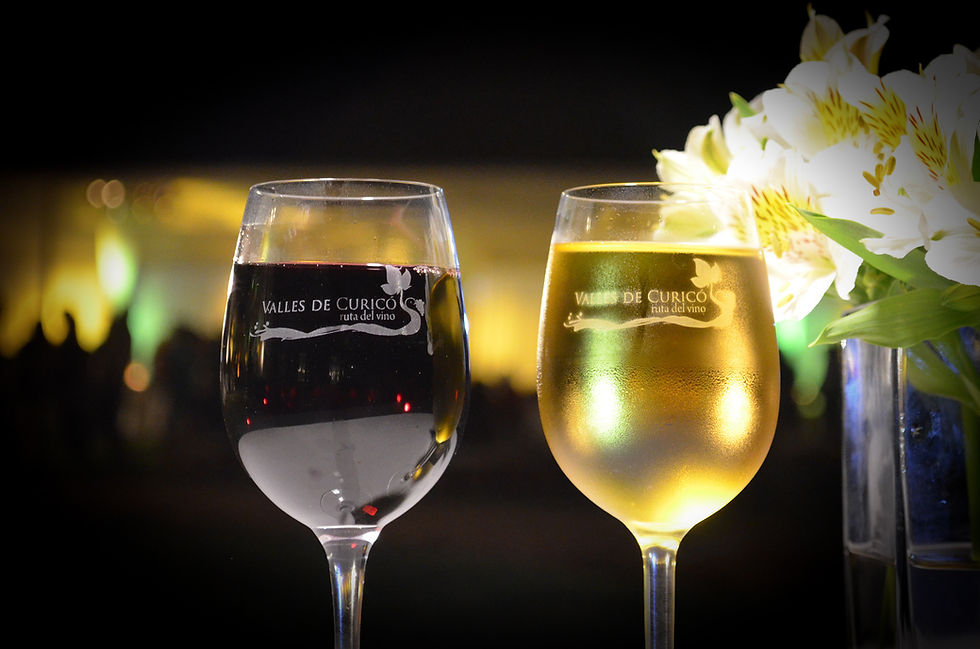"Where nobody is outsider"
In Curicó you can find countryside locations, walks in the foothills, a coastline of beautiful landscapes, fruit production and export of noble terroir wines. During the year, various festivals celebrating the tradition of peasant culture and abundant production of grapes and wines that give life to the great "Fiesta de la Vendimia" which annually attracts more national and international interest.

History of Curicó




The territory of Curicó city was inhabited by indians that called it "kuru ko" because the color of the ground near streams and wetlands.
Originally the city was called “San Jose de Buena Vista de Curicó”, founded on October 9, 1743, through donations of Captain Pedro Nolasco Solorza and Mrs. Monica Donoso and Navarro.
It´s economy is based on the cultivation and export of apples, pears, cherries, grapes and kiwis, plus annual crops such as beets, tomatoes, wheat, corn and vegetables.
With a history of nearly 500 years, the culture of wine is a characteristic element of the city. “Fiesta de la Vendimia” is celebrated between March 15th and 20th; that is a celebration of music, wine, crafts, cuisine and tradition, which is visited by thousands of people each year.
During the year, countryside and traditional chilean celebrations activities are carried out, like “Caldos y Caldillos”, “Rodeo”, “Campeonato de Enganches” and also “Rally de Autos Antiguos”.
Radal Siete Tazas




National Park “Radal Siete Tazas” is a protected area located in the Region of Maule (Chile ), 100 km north east of Talca and 55 km north east of Molina. It is administered by CONAF (Corporación Nacional Forestal), and is open all year round, however the main time to visit is between the months of December to March.
The park landscape is dominated by the presence of typical forest of the Central Zone with native tree species like oaks, hualos, coigües and ñirres, which colors contrast with the snow of the high peaks.
Claro river, southern boundary of the park, with its crystal clear cold waters, has worn for thousands of years basaltic rocks forming spectacular and whimsical shapes. Jut Seven Cups, are a sequence of seven waterfalls and their respective pools. There are also two large waterfalls, the Bridal Veil and La Leona.
Los Queñes - Vergara Border




In the Andean zone of Romeral, between the rivers Teno and Claro, is located Los Queñes village, which is characterized by good fishing, hunting, hiking and currents that allow the descent in rafting and kayaking. In addition, there is a border crossing to Argentina: the “Paso Vergara”, which connects Romeral with Malargüe - Province of Mendoza.
During November, the tourism and sporting event : " The Queñes River Fest", takes place; it is a festival to enjoy nature, family activities and share with friends. For the general public, there is live music , descents in rafting , horseback riding, mountain biking, aeroyoga, local cuisine, beer and wine tasting.
Wine Route - Curicó




Curico Valley : In the central valley of Chile one of the most renowned wine areas of the country is located. Therefore, each year arrive to the area many wine enthusiasts , especially to the " harvest festival " , held during the month of March.
Located in the Seventh Region of Maule, just over 250 kilometers from Santiago, it is an area of great Chilean tradition and one of the places with best wine conditions, so many of the wines produced there have received major international awards.
In the " Wine Route Curicó " you can meet vineyards and wineries like AltaCima, Aresti, Correa Albano, Echeverria, Las Pitras, Miguel Torres, Millamán, San Pedro, Valdivieso and Viñedos Puertas; in circuits linking technology and tradition, with boutique, manor houses and old parks.
Beaches and Lakes






Curicó province has not only coastal and mountain resorts but lacustrine. The traditional summer resort area is the coast of Iloca, where you can visit the cove Duao to buy fresh fish and seafood. The area offers a variety of accommodations and restaurants during peak season. At other times it is a quiet place where shutting off.
Near Constitution, to the south, also connects with the area Llico , Vichuquen and Laguna Torca National Reserve, place of conservation and reproduction of black-necked swan.
The road that connects both locations, goes into the hills of the coastal mountain range, where you can see the large areas dedicated to logging of pine and eucalyptus, for paper manufacture.
Sagrada Familia




Rincón de Mellado, is just 25 kilometers from the highway - Route 5 south, at the intersection Lontué - Sagrada Familia, there is mixed folklore with gastronomy , crafts and excellent picnics.
Once a year takes place the " Fiesta de la Chicha ", with free entrance to the site, as people pay only what they consume in the stands of typical food.
This is a family festival, which is organized jointly by the residents of Rincon de Mellado and the Municipality of Sagrada Familia, with the aim of attracting tourists from all over the country that year after year travel to paticipate of this traditional festival, where the protagonist has always been the “chicha” that occurs in this sector.





